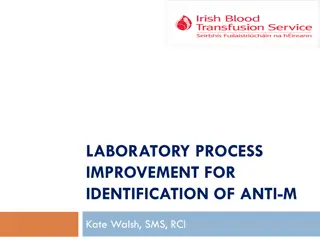Comprehensive Overview of Anti-Passback Control System
The Anti-Passback Control System is designed to prevent misuse of cards, track and restrict the number of people in an area, and trigger system events based on occupancy levels. It includes features such as interlocking of reader use, enforcement options, and event triggers for controlling system operations. The system ensures site suitability, maintains occupancy count, and enforces entry/exit controls to enhance security and efficiency. Global Anti-Passback allows coverage across multiple controllers with software tracking capabilities for continuous monitoring of cardholders.
Download Presentation

Please find below an Image/Link to download the presentation.
The content on the website is provided AS IS for your information and personal use only. It may not be sold, licensed, or shared on other websites without obtaining consent from the author. Download presentation by click this link. If you encounter any issues during the download, it is possible that the publisher has removed the file from their server.
E N D
Presentation Transcript
Anti-Passback Controlling flow and occupancy
Overview Named after passback passing back a card after going through a door / gate / turnstile FEATURES: Preventing misuse of cards Tracking and/or restricting the number of people in an area Triggering system events based on area occupancy Interlocking of reader use based on the cardholder location
Site Suitability Determine Entry/Exit points Must be controlled = No sneaking in/out Controller Grouping GAPB areas can be used across multiple controllers Preparedness for violations Who will fix the problems? Type of enforcement Soft & timed options
Track / Restrict Maintains count of people in area Two man rule (minimum occupancy) Restrict maximum occupancy
Event Triggers Control system based on occupancy Example: Display area status by lights connected to relay 1. Create Internal Variable(s) for relay control
Event Triggers, cont. 2. Assign Internal Variable to APB area with occupancy requirement
Interlocking Must enter an area before using readers in the area
Global Anti-Passback Allows Anti-Passback to cover whole site no matter how many controllers. Uses software in addition to hardware to track cardholders at all times Area 1 Area 2 Controller A Controller B 2. Then can Enter Area 2 1. Cardholder must Exit Area 1 Global Area OUT
Area Control Areas can be monitored and controlled in Alarm mode Operator can control the area (open/close) can also move users or grant free pass
Reset/Closing Resetting status will put allow all users one free pass Next card read will determine area Doesn t empty an area Users can be granted free pass individually Areas can be closedwhich will not allow entry exit is still allowed Controlled by Internal Variable Can be manually closed in Alarm Mode
Area Types Each type of Global Area can have a separate type to simplify Mustering Hazardous - An area that should be evacuated in the case of an emergency on the site. Hazardous areas can contain Sub Areas as well as have Safe Areas linked to them. Normal - An area that is not subject to evacuation in case of an emergency. The standard type for all areas if mustering is not used in the system. Safe - An area, such as a muster point or safe haven, where cardholders should report in case of an emergency on-site.
Mustering The goal of mustering is to move all people out of hazardous areas and have an accurate count of who might remain
Mustering Reports Historical Mustering can show status of area at a point back in time
What about? What type of Anti-passback control is suitable for large perimeters? How to set up a suitable mustering plan? What cases might make anti-passback unreliable?























